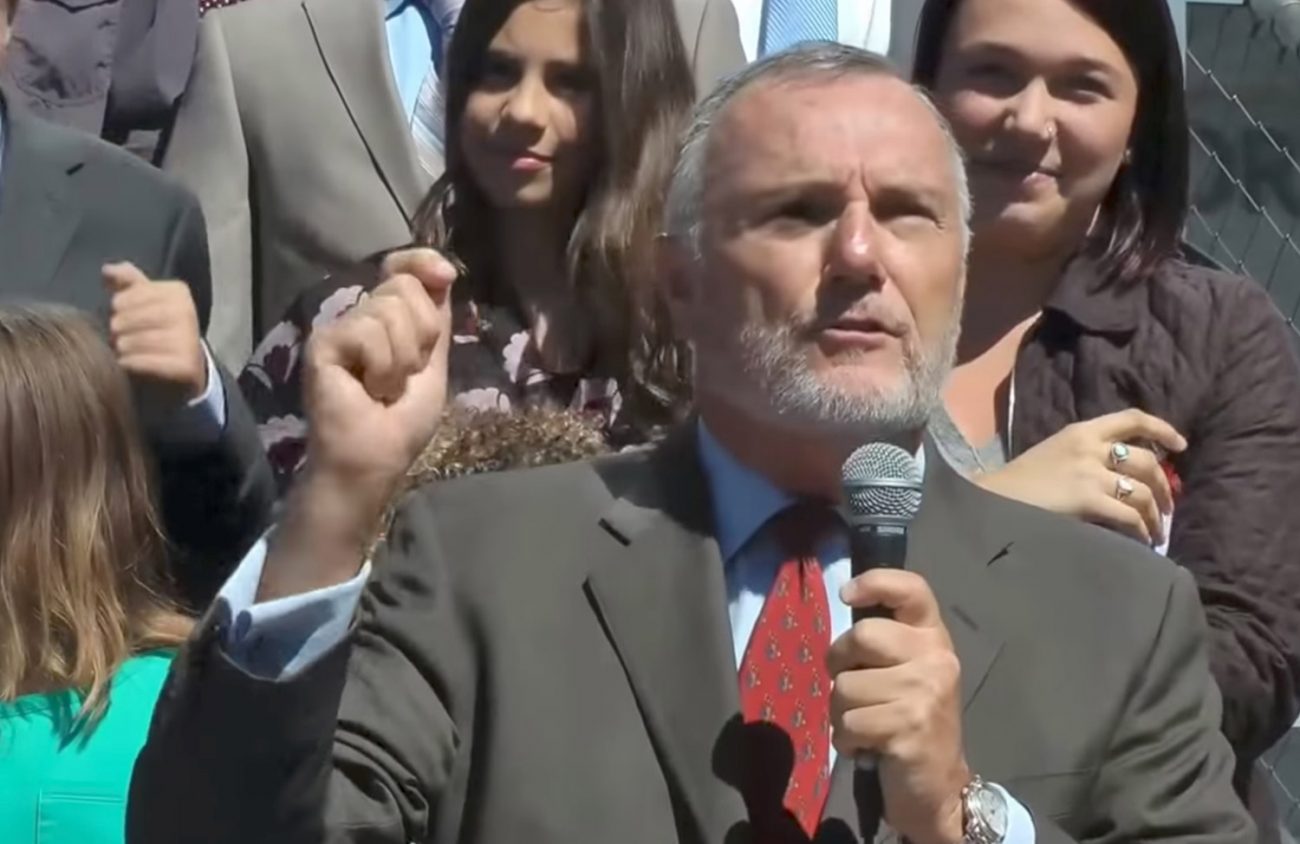As the temperatures climb over 100 degrees in Lane County, the science continues to mount proving that man-made climate change is a growing catastrophe worldwide. And as the Trump administration reduces and even stops work at the federal level to slow the course of global warming, youth and local governments are using the courts to try to stem the tide of fossil fuel induced disaster.
The 21 young plaintiffs of the Our Children’s Trust lawsuit, Juliana v. United States, are making a constitutional case based on the public trust doctrine, arguing that if the government is causing harm to the climate system, it needs to be enjoined to stop the harm.
The latest legal hurdle in the case is the Trump administration’s attempt to get a “writ of mandamus,” a move one of OCT’s attorneys, Phil Gregory, calls, “extraordinary” in that it is not commonly used. He adds, “It’s an extraordinary procedure, not often done.” But, he says, the youth climate case itself is an extraordinary case.
If granted, the writ would allow the Ninth Circuit Court of Appeals to independently review and possibly overturn the decision, made here in Eugene by District Court Judge Ann Aiken, to let the case move forward, and end the case before it even goes to trial.
Gregory says, “The government has overplayed its hand and said it was subject to onerous discovery obligations, which in fact have not come to pass.” In lawsuits, parties get documents pertinent to the case from one another through the discovery process, but Gregory says when the OCT attorneys reply to the U.S. Department of Justice at the end of August they will explain that discovery has not been an issue. “The parties so far have been able to work out differences.”
On July 25, the same three-judge panel that ordered OCT’s attorneys to file an answer to the Trump administration’s petition for a writ of mandamus granted a temporary stay of proceedings in the case in district court while it considers the petition.
Meanwhile, in California, lawyers have filed lawsuits that the Washington Post headlined as the “next big strategy for suing over climate change.” In these cases the attorneys are battling climate change using “nuisance theory” rather than the constitutional argument OCT is using.
The cases argue that under California common law, 37 fossil fuel companies have injured the City of Imperial Beach and Marin and San Mateo counties by contributing to rising seas, resulting in more frequent and severe flooding. The companies include Chevron, Shell and Rio Tinto.
“Climate change is the issue of our time,” attorney Vic Sher says. He was also a lead attorney on the spotted owl litigation in Pacific Northwest forests in the 1990s that was a game changer during the “forest wars” of that time.
“The lawsuits rest on the idea that the injuries suffered from sea level rise are the results of decades-long disinformation and deception knowingly undertaken by members of the fossil fuel industry,” he says.
Science now allows us to draw direct connections between emissions and impacts and then attribute those emissions to specific companies, Sher argues. There is a “causal connection,” he says, between fossil fuel companies and sea level rise. Documents from the University of Texas archives that were combed through by reporters from the Columbia School of Journalism, InsideClimate News and the L.A. Times show that the companies were aware of the impacts of climate change.
For example, according to a 2015 InsideClimate News story, in 1978 a top technical expert “warned Exxon scientists and managers that independent researchers estimated a doubling of the carbon dioxide (CO2) concentration in the atmosphere would increase average global temperatures by 2 to 3 degrees Celsius (4 to 5 degrees Fahrenheit), and as much as 10 degrees Celsius (18 degrees Fahrenheit) at the poles. Rainfall might get heavier in some regions, and other places might turn to desert.”
Sher says the fossil fuel industry in the late ’80s and early ’90s took a “deliberate turn to tobacco industry tactics working to seed doubt” about human-caused climate change.
The 37 companies named in the complaints are responsible for approximately 20 percent of all industrial carbon dioxide and methane pollution between 1965-2015, according to the lawsuits’ press release.
Sher says, “The case will use state law, strong science and the evidence of corporate decision-making.”
Gregory, who lives in San Mateo County, is not only familiar with the California lawsuits, he has worked in the past with one of Sher’s co-counsels on lead paint cases in that state. The lead paint suit argues on behalf of 10 California cities and counties that companies understood the health hazard of lead paint but nevertheless promoted its use, leading to the poisoning of thousands of children each year.
Gregory says of the California sea level lawsuits in comparison to OCT’s constitutional case: “Our cases are only similar to the extent they are both based on long-term knowledge of the problem.”
But he adds, “It’s extraordinarily important to go after fossil fuel industry based on its knowledge and concealing what happened. We can’t let any industry hide the ball and lie about it. The federal government won’t go after them, so it’s very important that the states and county governments go after them. I’m very, very glad they brought the case because it’s based on long-term knowledge.”
Sher says, “I think the courts have always provided the last hope for a level playing field for citizens and for communities injured by large corporate interests.”
